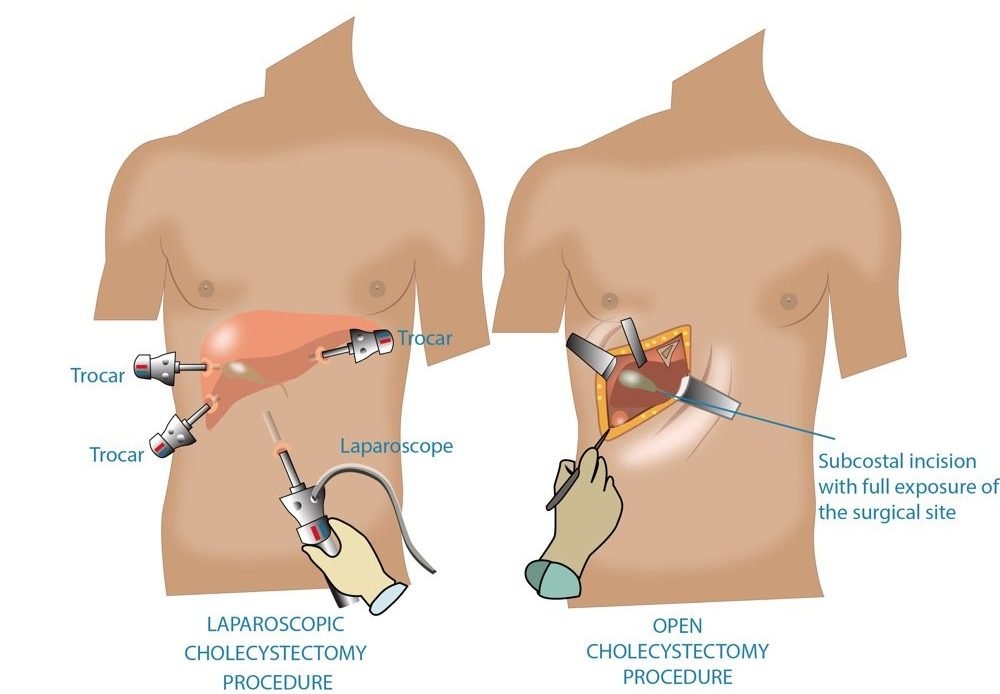Gallbladder Removal: Ultimate Guide to Laparoscopic Success

A Revolution in Gallbladder Removal
Are you grappling with gallbladder issues and feeling overwhelmed by the thought of surgery? Laparoscopic gallbladder removal surgery, also known as laparoscopic cholecystectomy, might be the breakthrough you need. This advanced procedure has revolutionized the way surgeons address gallbladder problems, offering patients a faster recovery and less post-operative discomfort compared to traditional open surgery. In this comprehensive guide, we’ll walk you through everything you need to know about laparoscopic gallbladder removal, including preparation, the procedure itself, recovery, and long-term outcomes.
What Is Laparoscopic Gallbladder Removal Surgery?

Laparoscopic gallbladder removal is a minimally invasive surgical technique used to remove the gallbladder. Unlike traditional open surgery, which requires a large incision, laparoscopic surgery involves making several small incisions in the abdomen. A laparoscope—a thin, flexible tube with a camera and light—is inserted through one of these incisions. This allows the surgeon to view the internal organs on a monitor and perform the surgery with greater precision.
Key Features of Laparoscopic Surgery:
Minimally Invasive: Utilizes small incisions, each about 0.5 to 1 cm.
Reduced Recovery Time: Most patients experience a quicker return to daily activities.
Less Pain and Scarring: The smaller incisions result in less post-operative pain and minimal scarring compared to open surgery.
Why Might You Need Gallbladder Removal?
Bile, a digestive fluid secreted by the liver, is kept in reserve in the gallbladder, a little organ located under the liver. When the gallbladder becomes diseased or inflamed, it can cause severe discomfort and complications. Common reasons for gallbladder removal include:
Gallstones: These are solid particles that form in the gallbladder and can block the flow of bile, causing pain and other symptoms.
Cholecystitis: This condition involves inflammation of the gallbladder, often due to gallstones. Severe pain and fever may result from it.
Gallbladder Polyps: Abnormal growths in the gallbladder that may require removal if they cause symptoms or have the potential to become cancerous.
Preparing for Your Laparoscopic Gallbladder Surgery
Proper preparation is essential for a successful surgery and smooth recovery. Here’s what you need to know:
Before Surgery:
Consultation: Meet with your surgeon to discuss your medical history, current symptoms, and the details of the procedure.
Preoperative Tests: You may need to undergo various tests, such as blood work, ultrasounds, or other imaging studies, to assess your condition and ensure you’re ready for surgery.
Diet and Medication: Follow your surgeon’s instructions regarding diet and medication before the surgery. You may be asked to avoid eating or drinking for several hours prior to the procedure.
The Procedure: What to Expect
On the day of the surgery, you’ll be given anesthesia to keep you comfortable and pain-free throughout the procedure. Here’s a step-by-step overview of what happens during laparoscopic gallbladder removal:
Incision and Insertion: Your surgeon will make several small incisions in your abdomen, usually around your belly button and in the upper abdomen.
Laparoscope Insertion: One of the cuts is used to introduce a laparoscope. This device projects high-definition images of your internal organs onto a monitor, allowing the surgeon to see inside your abdomen.
Gallbladder Removal: Specialized surgical instruments are inserted through the other incisions to carefully detach and remove the gallbladder.
Closing Incisions: Once the gallbladder is removed, the incisions are closed with sutures or adhesive strips.
Duration of the Surgery: The entire procedure typically lasts between 1 to 2 hours.
Recovery: What You Need to Know
One of the major benefits of laparoscopic surgery is the reduced recovery time compared to open surgery. What to anticipate while you’re recovering is as follows:
Hospital Stay: Most patients can go home the same day or after an overnight stay, depending on their individual circumstances and the specifics of the surgery.
Pain Management: It’s common to feel uncomfortable following surgery. Your doctor will provide pain relief medications to help manage this. Over-the-counter pain relievers like acetaminophen or ibuprofen may also be recommended.
Activity Restrictions: You should avoid strenuous activities and heavy lifting for a few weeks to allow your body to heal properly. Light walking and gentle movements are encouraged to aid in your recovery.
Diet: Start with a bland diet consisting of easy-to-digest foods, such as toast and applesauce. Gradually reintroduce more complex foods as tolerated. Your doctor will provide specific dietary guidelines to help you transition back to a normal diet.
Wound Care: Keep the incision sites clean and dry. Follow your surgeon’s instructions for caring for your wounds and watch for any signs of infection, such as redness, swelling, or discharge.
Long-Term Outlook and Lifestyle Adjustments
After your gallbladder removal, you can generally expect a return to your normal routine with some necessary dietary adjustments. Without a gallbladder, bile flows continuously from your liver into your digestive system, which can affect how you digest food.
Lifestyle Tips for Post-Surgery Health:
Eat Smaller, Frequent Meals: This helps manage bile flow and aids digestion.
Avoid High-Fat Foods: Fatty foods can be more difficult to digest without a gallbladder. Prioritize eating a diet rich in fruits, vegetables, whole grains, and lean proteins.
Stay Hydrated: Drinking plenty of water supports overall digestive health and helps prevent constipation.
Conclusion: Embrace a Healthier Future
Laparoscopic gallbladder removal surgery offers a modern, effective solution to gallbladder issues, with numerous benefits including a faster recovery time, less pain, and minimal scarring. If you’re struggling with gallbladder problems and considering surgery, discuss this option with your healthcare provider to determine if it’s right for you. With proper preparation and post-surgical care, you can look forward to a healthier, more comfortable future.
If your symptoms are severe or don’t improve, don’t wait—schedule an appointment at Lux Hospital for expert care and treatment. We focus on your comfort and well-being first.




















